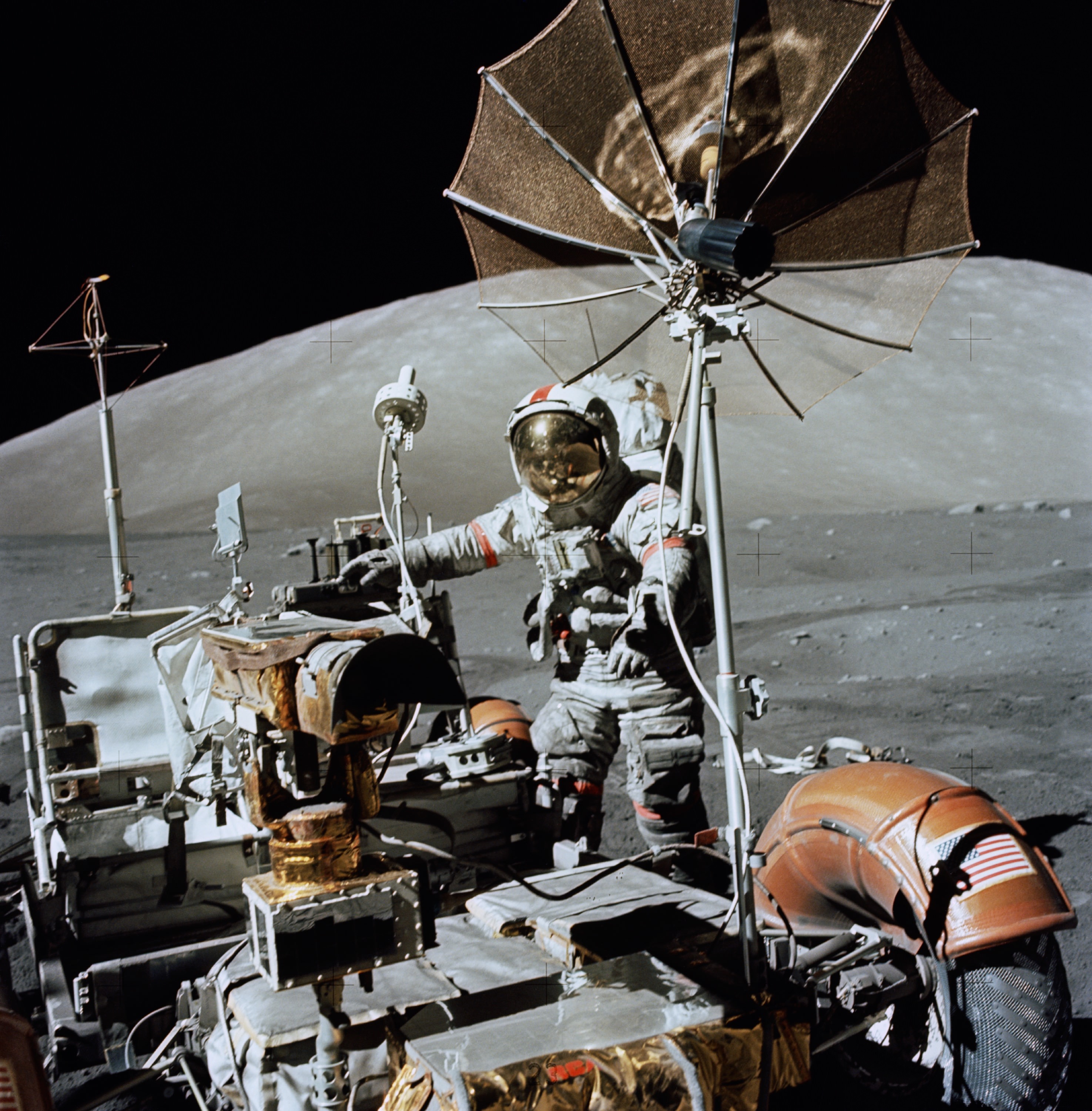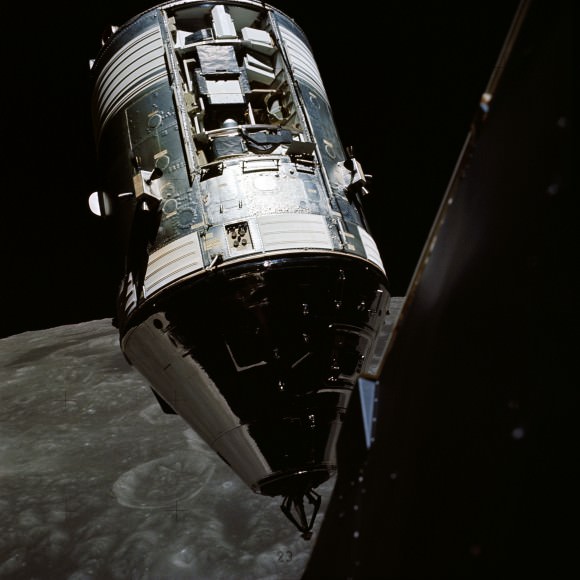For a brief period in the 1960s and 1970s, 12 people ventured all the way to the surface of the Moon. The accomplishment at the time was hailed as a political victory over the Soviet Union, but as decades have passed the landings have taken on more symbolic meaning with NASA -- a time of optimism, of science and of the American spirit.
The last lunar landing was
Apollo 17
, which took place on Dec. 11, 1972. Commander Eugene Cernan and lunar module pilot Harrison Schmitt did three moonwalks in the Taurus-Littrow valley, scoping out the highlands to try to get a geologic sense of the area. Among their more memorable findings are orange soil. You can see some pictures from their sojourn below.
[caption id="attachment_117248" align="alignnone" width="448"]
Apollo 17's Saturn V rocket poised on the launch pad before its Dec. 7, 1972 takeoff. Credit:[/caption]
[caption id="attachment_117249" align="alignnone" width="580"]
Apollo 17's lunar rover, flag and part of the lunar module in this view taken out the module's window. Credit: NASA[/caption]
[caption id="attachment_117250" align="alignnone" width="580"]
Apollo 17 commander Gene Cernan with a gravimeter experiment. The lunar rover is at right. Credit; NASA[/caption]
[caption id="attachment_117252" align="alignnone" width="575"]
Orange soil (from volcanic glass beads) is clearly visible in this image from Apollo 17. Credit: NASA[/caption]
[caption id="attachment_117257" align="alignnone" width="580"]
The Apollo 17 command module America and its service module, as photographed by the returning lunar module Challenger. Credit: NASA[/caption]
 Universe Today
Universe Today

